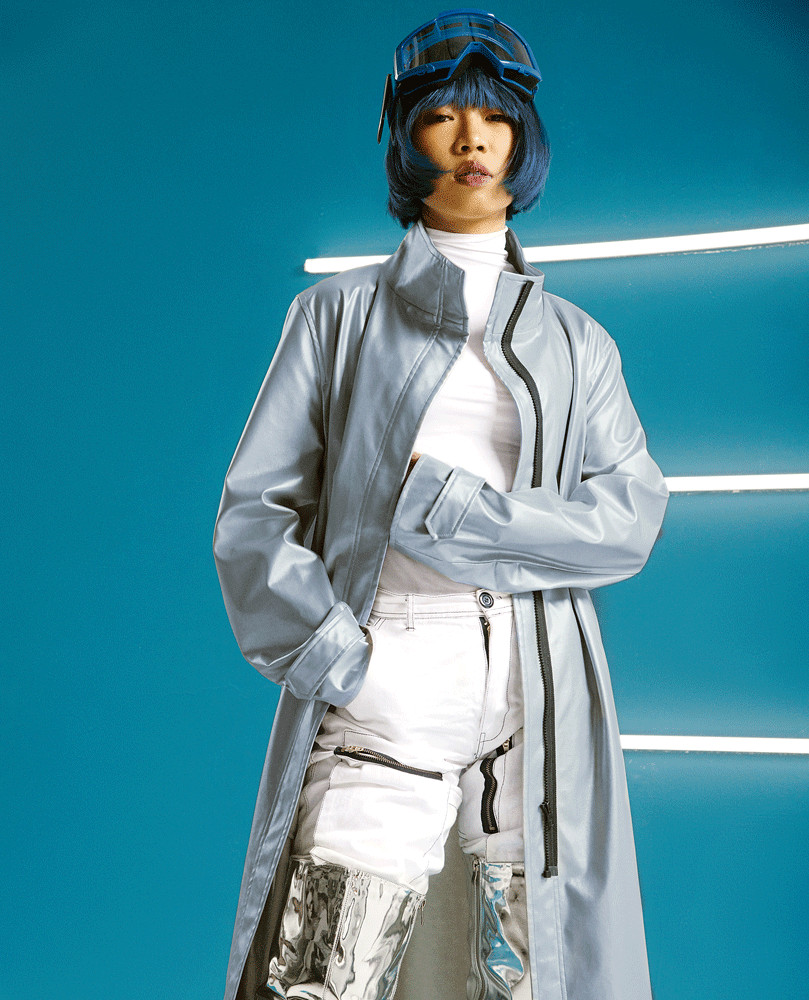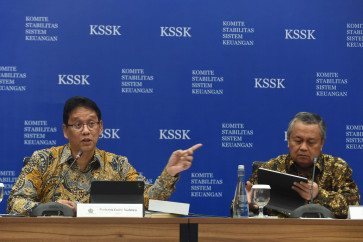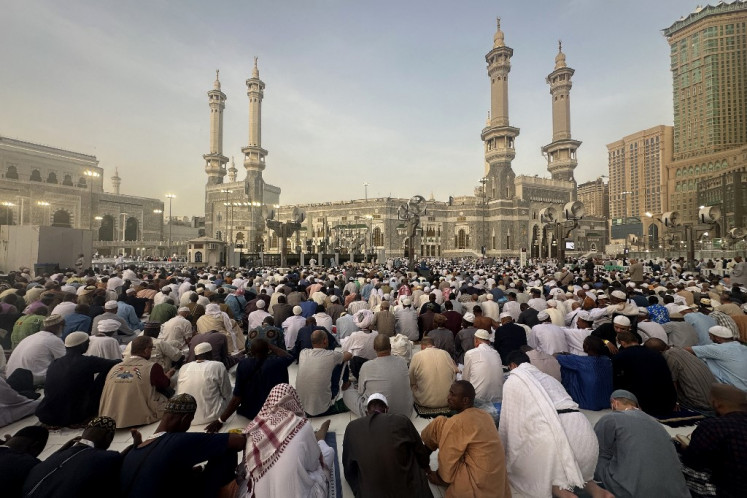Popular Reads
Top Results
Can't find what you're looking for?
View all search resultsPopular Reads
Top Results
Can't find what you're looking for?
View all search resultsIndie music reaches new heights in 2018
Indonesia saw its independent music scene shine brighter and more vibrantly in almost every step that it took in 2018.
Change text size
Gift Premium Articles
to Anyone
I
ndependent artists slowly became the mainstream. The number of gigs, both big and small, multiplied increasingly as a result of continued community efforts, and experimentation from and beyond the underground was welcomed on a larger and organic scale.
These are the highs that the Indonesian independent, more affectionately known as “indie”, and underground scenes reached in this fruitful year, the myriad lows can be saved for another time.
Hip Hop Rules
Throughout 2018, the scene saw the continuing rise of hip-hop and the emergence of excellent artists trying to paint the genre in their own colors.
Releases from Ariel Nayaka, Matter Mos, Laze, the members of the ONAR collective, Ramengvrl, Joe Million, BAP and Tuan Tigabelas captivated the Indonesian zeitgeist and they made it their world.
In the perpetually active underground, the year saw releases from veterans, such as rap lord Morgue Vanguard and Doyz and Krowbar.
There has not been any other time in Indonesian music history during which hip-hop has dominated the mainstream in a significant way, as if to shape the pop music landscape in its favor. These artists and their community-based independent aesthetics have effectively dethroned the relevance of major music labels as the auteurs of taste.
Other significant releases in the main independent scene mainly came from emerging bands such as the divisive .FEAST and the ambitious Polka Wars.
Both bands released singles that gave a glimpse toward their musical direction, aiming mainly for a more radio-friendly approach while still retaining the aspects that make them who they are, even if their use of political and social issues in these new songs could come off as a bit questionable.
Releases from bands in the Jakarta indie scene’s most prominent do-it-yourself (DIY) label Kolibri Records managed to also dominate the indie rock spectrum, such as Grrrl Gang’s Not Sad But Fulfilled and Bedchamber’s Geography, which resulted in sold-out shows for both bands as well as international tours to Singapore, Malaysia and the Philippines this year.
New Experimentals
Further deep in the underground, we see many examples of experimentation carried out by known artists that were looking to expand their horizons.
Pianist Gardika Gigih took on an electronic collaboration with budding electronic musician Tomy Herseta, rapper Joe Million collaborated with Yogyakarta-based noise musician and archivist Indra Menus and former Jazz guitarist Tesla Manaf jettisoned all traces of his jazzy past to dive deep into noise music.
In the electronic spectrum, we saw the innovative trio Uwalmassa continue to mine the roots of Indonesian traditional sights and sound to meld unique music that was able to shake the floors of famous Berlin club Berghain.
We saw a rise in artists dabbling in modular synths, with the most notable acts being Jevin Julian, Remedy Waloni and the Random Brothers, which comprises former Nidji bassist Randy Danistha and his brother Nara Anindyaguna.
In the global eye, incendiary Yogyakarta duo Senyawa continued to awe the world with its music, going on several tours of Australia and Europe, as well as several places in Indonesia for the first time. The newest album, Sujud, made the Best-Of-The-Year lists of several foreign publications such as Wireand The Quietus.
Endless Festivals
The rise of these artists can be credited in a lot of ways to the numerous events, both big and small in Indonesia, that gave them a platform to showcase their art.
International-level events such as the mammoth Djakarta Warehouse Project (DWP), We the Fest (WTF) and the SHVR Ground Festival have become the place for youngsters to catch up on what’s popular in the Indonesian scene at the moment.
Ariel Nayaka, Matter Mos, Polka Wars, Rayssa Dynta and Ramengvrl shared a bill with the superstar likes of Lorde, Albert Hammond Jr, Vince Staples, Majid Jordan, Miguel and Alt-J at WTF, while the Random Brothers shared a bill with The Weeknd, Major Lazer and DJ Snake at DWP’s 10th anniversary edition in Bali.
Smaller, community-based festivals and events also did more to elevate the standing of Indonesia’s lesser-known musicians due to a greater focus on their target markets.
The Archipelago Festival in October, for example, gave a platform to Jakarta acts ranging from Glaskaca, Godplant and Jirapah to regional ones such as Semiotika from Jambi, Samarinda’s Murphy Radio and Surakarta’s Soloensis, while also inviting electronic acts like Sunmantra, GHO$$ and Dipha Barus onto the bill.
Jakarta’s largest music festival Synchronize Festival also took that approach and diversified its lineup to include a myriad of multigenre acts ranging from legendary rock bands such as Dewa 19, Padi and Superman is Dead to emerging hip-hop artists and legends like Ramengvrl and Iwa K, as well as underground bands from various corners of Indonesia.
Grassroot Movement
Aside from the artists themselves, 2018 also saw the rise of many independently organized events, usually free from the cigarette sponsorship that music events tend to take simply because of financial constraints.
Grassroots collective Noisewhore was responsible for bringing several overseas indie acts to Jakarta including Unknown Mortal Orchestra, Sunset Rollercoaster, Peach Pit, Cosmo Pyke and Snail Mail. Equipped with the organizers’ sensitive knowledge of musical relevancy, their shows themselves became well curated, roping in overseas acts at the right moment of their ascent.
This year, Jakarta also welcomed a significant new venue to accommodate the growing number of local electronic acts.
The springing up of Jakarta’s new party hub Hotel Monopoli in Kemang, South Jakarta, as an event space has helped electronic communities by giving them a proper venue for parties to take place, even though the venue itself is far from perfect.
Over in the artistically vibrant city of Yogyakarta, what was probably the most immersive and important music festival to ever take place on Indonesian soil took place with the help of like-minded collaborators from Germany, Singapore and the Philippines.
Nusasonic was held in October, exploring the broad spectrum of experimental sound and music cultures from Southeast Asia, enabling it to communicate with likeminded experimental figures from Europe.
The two-week long festival comprised multiple collaborations, workshops and performances from both Indonesian and foreign artists, which created a sonic dialogue and a bridge between the two regions for the sake of the art itself. The focus was not on the lineup, it was on the sharing of ideas in a very practical form.
All-in-all it seems like a wonderful moment for the Indonesian independent music scene and its tireless underground.
With the Indonesian pop spectrum overtaken by small, independent musicians, and the rebellious independent scene figures continuing to do what they do at their noted pace, it will be interesting to see how these achievements manage to sustain themselves in the future.
Personally, this writer cannot wait for Noisewhore’s upcoming Mitski concert in February and the Jogja Noise Bombing Festival in January.











